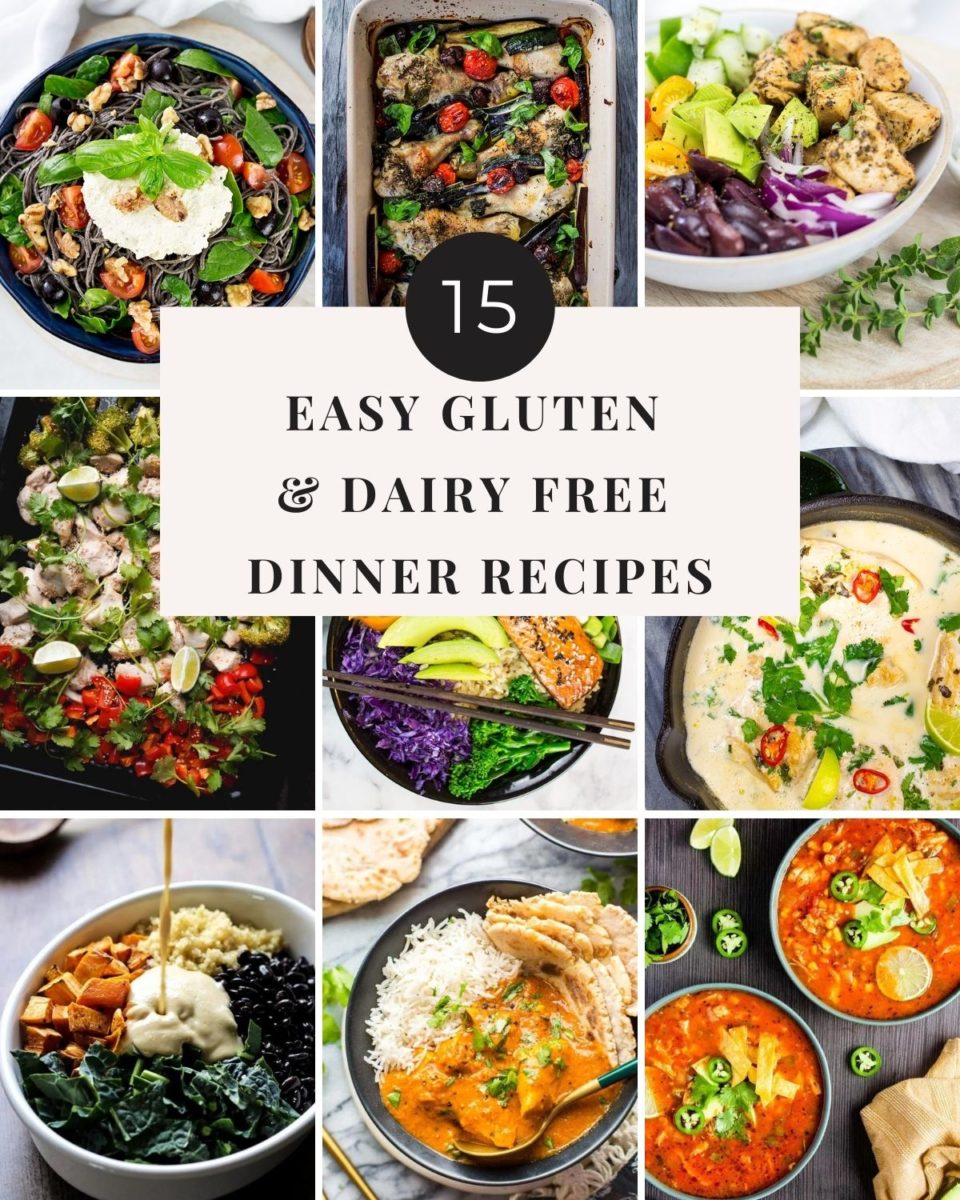
Easy Gluten & Dairy Free Recipes: Delicious!
Dishes crafted without wheat and milk products offer a flavorful adventure for those with dietary restrictions or anyone seeking lighter, plant-forward options. This culinary approach embraces a wide range of ingredients, from vibrant vegetables to hearty grains and creamy nut-based sauces. The result is a symphony of tastes and textures that proves restrictive eating can be both exciting and satisfying.
Equipment
- Large pot
- Colander
- Large skillet or pot
- Wooden Spoon or Spatula
- Measuring cups and spoons
- Knife
- Cutting board
Ingredients
- 1 pound gluten-free pasta (penne, rotini, or spaghetti)
- 2 tablespoons olive oil
- 1 medium onion, chopped
- 2 cloves garlic, minced
- 28 ounces crushed tomatoes
- 1 teaspoon dried oregano
- 1/2 teaspoon dried basil
- 1/4 teaspoon red pepper flakes (optional)
- 1/2 cup vegetable broth
- Salt and black pepper to taste
- Fresh basil leaves for garnish (optional)
Instructions
- Step 1: Cook the Pasta: Bring a large pot of salted water to a boil. Add the gluten-free pasta and cook according to package directions until al dente. Drain the pasta and set aside.
- Step 2: Saut Aromatics: While the pasta is cooking, heat the olive oil in a large skillet or pot over medium heat. Add the chopped onion and cook until softened, about 5 minutes. Add the minced garlic and cook for another minute until fragrant.
- Step 3: Simmer the Sauce: Pour in the crushed tomatoes, oregano, basil, red pepper flakes (if using), and vegetable broth. Season with salt and black pepper to taste. Bring the sauce to a simmer, then reduce the heat to low and cook for 15 minutes, stirring occasionally, to allow the flavors to meld.
- Step 4: Combine Pasta and Sauce: Add the cooked pasta to the skillet with the tomato sauce. Toss to coat the pasta evenly.
- Step 5: Serve: Serve immediately, garnished with fresh basil leaves, if desired. Optional Tips: For a richer flavor, add a tablespoon of tomato paste along with the crushed tomatoes. Nutritional yeast can be sprinkled over the pasta for a cheesy flavor. To add protein, consider adding cooked lentils or white beans to the sauce.
Notes
Variations
This recipe offers ample opportunities for customization, catering to various preferences and dietary needs.
- Ingredient Swaps: For a richer flavor, sun-dried tomatoes or roasted bell peppers can be added to the sauce. Other vegetables such as zucchini or mushrooms can be incorporated for added nutrients. For those who enjoy spicy food, additional red pepper flakes or a dash of cayenne pepper can be included.
- Regional Twists: To infuse a Mediterranean flavor, add a handful of Kalamata olives and a sprinkle of feta cheese alternative (dairy-free) at the end of cooking. For a Mexican-inspired dish, substitute the oregano and basil with cumin and chili powder, and garnish with avocado.
- Dietary Adjustments: For a high-protein meal, consider adding cooked lentils, chickpeas, or plant-based ground meat to the sauce. A low-carb version can be achieved by serving the sauce over zucchini noodles (zoodles) or cauliflower rice instead of pasta.
Serving Suggestions
This dish offers versatility in serving. Gluten-free and dairy-free pasta with tomato sauce is ideally served as a comforting and satisfying dinner or lunch. It pairs well with a side of steamed vegetables or a fresh salad for a complete meal. A sprinkle of dairy-free parmesan alternative can enhance the flavor, and a drizzle of olive oil adds richness. It’s also an excellent option for meal prepping, providing a convenient and nutritious meal throughout the week.
Storage Tips
Proper storage ensures the dish retains its flavor and texture. Leftover gluten-free and dairy-free pasta with tomato sauce can be stored in an airtight container in the refrigerator for up to 3-4 days. For longer storage, it can be frozen for up to 2-3 months. When reheating, add a splash of water or vegetable broth to prevent dryness. Ensure the dish is thoroughly heated before serving.
Frequently Asked Questions
- Question 1: Can I use fresh tomatoes instead of crushed tomatoes?
Yes, fresh tomatoes can be used. Blanch, peel, and chop them before adding them to the sauce. Increase the cooking time to allow the tomatoes to break down and thicken. - Question 2: Is there a substitute for vegetable broth?
Water can be used in place of vegetable broth, but the flavor may be less intense. Chicken broth can also be used for non-vegetarian diets. - Question 3: Can this recipe be made ahead of time?
Yes, the tomato sauce can be made ahead of time and stored in the refrigerator for up to 3 days. Cook the pasta just before serving to prevent it from becoming soggy. - Question 4: What’s the best way to prevent gluten-free pasta from becoming mushy?
Cook the pasta according to package directions, but check for doneness a minute or two before the recommended time. Rinse the cooked pasta with cold water to stop the cooking process and prevent it from sticking together.